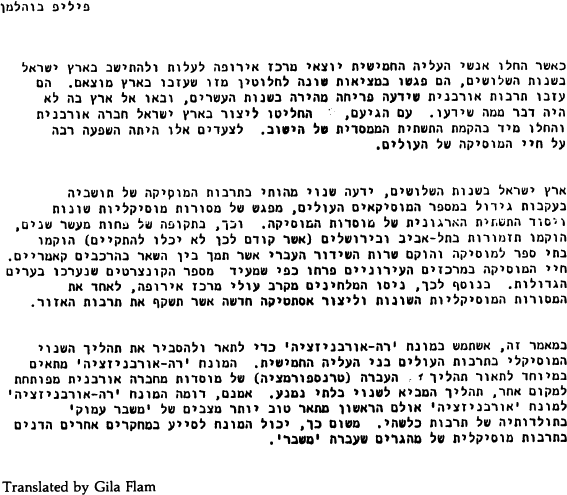Article contents
Central European Jews in Israel: The Reurbanization of Musical Life in an Immigrant Culture
Published online by Cambridge University Press: 07 March 2019
Extract
From 1933 until 1939 the burgeoning musical culture of Palestine underwent a transformation of explosive proportions. The transformation not only effected an increase in the sheer quantity of musicians and musical traditions, but also provided the foundations on which the institutions of Israeli musical culture were built. In less than a decade, orchestras in both Tel Aviv and Jerusalem were established where before none could survive; music academies and a broadcasting service supporting myriad chamber ensembles took root; an active and broadly based concert life throve in the urban centers; and immigrant composers were attempting to mold the confluence of musical styles into an aesthetic that would reflect the culture of the region.
Abstract

- Type
- Articles
- Information
- Copyright
- Copyright © 1984 by the International Council for Traditional Music
References
References Cited
- 3
- Cited by




